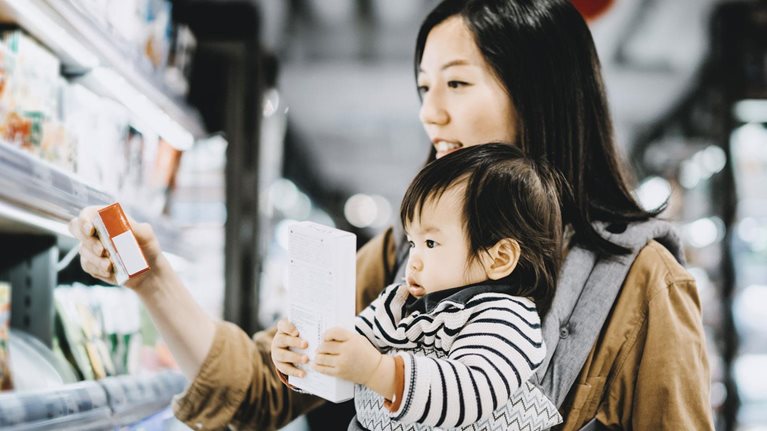Even before the COVID-19 pandemic disrupted world economies, Latin American countries were facing a challenging growth environment. In 2019, Mexico’s real GDP growth was near-zero, while Brazil’s was 1.1 percent; Argentina’s inflation rate was more than 50 percent; and the entire region experienced high exchange-rate volatility. The COVID-19 crisis has only exacerbated the challenges: Latin American markets are expected to contract significantly and now face the prospect of a prolonged recovery.
On top of tough economic realities, consumer-packaged-goods (CPG) companies in the region are also grappling with rapid changes in the consumer landscape. New and potentially “sticky” consumer behaviors have emerged in response to the pandemic and its related physical-distancing mandates. A shift to value—with up to 40 percent of consumers abandoning their preferred brands and retailers in favor of more affordable ones—has created a “shock to loyalty,” and some 30 percent of consumers who switched don’t plan on switching back.
Consumers are going to grocery stores less often, resulting in changes in shopper missions and baskets. The migration toward e-commerce and digital channels has accelerated, with 17 percent of consumers either trying home delivery for the first time or using it more frequently during the pandemic, while those consumers who opt to shop at physical stores have shown a preference for hypermarkets or cash-and-carry formats and nearby local stores. And, no surprise, consumers are increasingly focused on health and hygiene.
Against that backdrop, capturing organic growth is more important—and perhaps more difficult—than ever. As CPG companies seek growth, they would do well to evaluate each of their core commercial capabilities and the roles those capabilities will play during and after the COVID-19 crisis. Leaders at CPG companies should ask themselves the following questions: How can I strengthen my company’s commercial practices to sustain profitable growth in the next normal? And, at a time of such uncertainty, which time-tested best practices still apply? Which are increasing in importance?
Our latest Commercial Excellence Benchmarking (CEB) Survey provides some answers. In partnership with Nielsen, we surveyed 36 companies and analyzed what “winners” (companies that achieved higher sales growth in their respective categories and also outperformed peers in one or more commercial metric) in Latin America’s CPG industry do differently (see sidebar “About the Commercial Excellence Benchmarking Survey”).
Quantifying the value of commercial excellence
The CEB Survey shows that winners grew sales by up to seven percentage points ahead of others. They also reduced expenses as a percentage of net sales across multiple dimensions (Exhibit 1).

In comparing the latest CEB Survey results with those from previous years, we found that CPG companies in Latin America have made tremendous progress in certain areas but continue to lag in others (see sidebar “How commercial excellence has evolved in Latin America”). Innovation, in particular, remains a weak spot among companies in the region.
Six practices that lead to outperformance
How are the best-performing CPG companies in Latin America differentiating themselves? They are implementing six practices across their commercial functions.
Make data-driven portfolio decisions
Given the dynamic shifts in consumer behavior during the COVID-19 crisis—in particular, the migration of consumer demand toward new consumption occasions, pack sizes, price tiers, and healthy and locally sourced products—it’s become even more important for CPG companies to set a disciplined cadence for reviewing their SKU portfolios. All winning companies in the CEB Survey perform portfolio evaluations at least once a year. By contrast, 21 percent of nonwinning companies do so less than once a year or without a specific cadence.
In addition, winners conduct several types of quantitative analysis to ensure that they are capturing rich consumer and shopper insights. For example, all winning companies—versus just over half of nonwinning companies—analyze price elasticity; at least half of winners conduct brand-image tracking and choice-based conjoint analysis (Exhibit 2).

Prioritize agility in digital marketing
As in other regions around the world, the marketing landscape in Latin America has been shifting to digital, and the COVID-19 crisis has accelerated that shift. Facebook has above 90 percent penetration among Latin American internet users1—a higher level than in other developing and developed geographies; Brazil and Mexico alone have more than 200 million users. Social media is a top source of marketing value for all the surveyed CPG companies. Winners are committing twice as much of their marketing budgets as nonwinning companies to digital channels.
Digital marketing is an independent function in almost 90 percent of winning companies but only 50 percent of nonwinning companies. That said, in a fast-changing environment that requires dynamic engagement with customers, having a dedicated digital-marketing team isn’t enough: the team must also be agile.
At winning companies, agile war rooms, also known as situation rooms or command centers, are responsible for a wider scope of marketing activities. In-house teams focus on testing marketing promotions and campaigns, performing tests with much higher frequency than nonwinning companies do. And because winning CPG companies consistently embrace agility in their digital-marketing practices, they have been able to experiment more and learn faster as the industry gains digital maturity.
Furthermore, winners are materially more active in personalization: 43 percent of winning companies have data platforms with 360-degree views into their consumers (versus 18 percent of others). Additionally, winners send personalized content and promotions to 23 percent of their consumers, while nonwinners send them to only 12 percent of their consumers.
Make analytics-based pricing changes—and explain the benefits to retailers
Even in the current challenging economy, winners in revenue-growth management are more consistent than others in sustaining net-price increases. They do so 87 percent of the time, compared with 70 percent for others. Winning companies achieve that consistency through a combination of three factors.
First, winners use more advanced price-setting methodologies and analytical tools (such as econometric regression or decision trees to calculate price elasticities and cross-elasticities). Second, they set prices at a deeper level of granularity—implementing city-level versus region-level pricing, for example, and differentiating prices and promotions in online versus offline channels. Third, they develop comprehensive sell-in stories for communicating price changes to retailers.
While many CPG companies in Latin America mostly point to raw-material-cost increases when justifying price increases to retailers, winners instead establish a dialogue with each of their retail partners. They explain how the retailer benefits from the price change and share consumer and shopper insights relevant to that particular retailer (Exhibit 3).

Between 15 and 32 percent of consumers in Latin America have switched brands during the pandemic specifically because of pricing or promotions. CPG companies with sophisticated capabilities in pricing and overall revenue-growth management will benefit the most from those opportunities.
Rigorously evaluate and nurture distributor relationships
In most Latin American countries, fragmented trade is especially relevant in grocery retail, accounting for 30 to 70 percent of total sales. That means CPG manufacturers must manage a complex, multilayered go-to-market model that encompasses direct sales and distributor management.
Winners are more disciplined and forward thinking when assessing their go-to-market strategies: 60 percent review their strategies at least annually. That’s in contrast to as many as 42 percent of nonwinning companies that don’t have set frequencies for their strategy reviews. Adjusting go-to-market strategies is particularly critical in current times, as consumers have reduced the frequency of their store visits.
Winning CPG companies also take a tailored approach to third-party and distributor management. They are significantly more likely than nonwinning companies to assess distributor capabilities, identify gaps, build related action plans, create profiles of ideal distributors that meet the needs of their category and distribution strategies, and develop tailored account plans to mitigate risk and align jointly on goals (Exhibit 4).

Furthermore, winners are 1.7 times more likely than others to conduct “should cost” analyses to generate an independent understanding of their distributors’ theoretical cost structures. And they engage in open dialogues with their distribution partners to discuss expected margins and agree on commercial policies.
Closely track—and reward—sales performance and in-store execution
In previous economic recessions, a CPG company’s ability to excel in sales and in-store execution has proven crucial. The same holds true today.
CPG-sales winners in Latin America use criteria different from nonwinners’ to segment retail outlets in fragmented trade. While nonwinners tend to rely on current-state criteria (such as store type and sales volume), winners are twice as likely to use forward-looking criteria (such as development potential, volume growth, and category-share potential).
Additionally, winners are particularly disciplined in determining execution criteria on a case-by-case basis, meaning that they create a “picture of success” specific to each store: 86 percent of winners do so consistently, compared with only 58 percent of others. Unsurprisingly, winners also invest in equipping their sales forces with smartphones and other handheld devices and in exploring a range of features, including camera, geofencing, and inventory tracking (Exhibit 5).

Another important aspect of excelling in in-store execution is holding salespeople accountable and compensating them accordingly. At winning companies, the proportion of salespeople’s compensation that is performance based is 1.8 times higher than that at nonwinning companies. And to ensure that the incentives generate the desired outcomes, winners track sales and store execution on a weekly basis, with an emphasis on planogram compliance and efficiency of store visits.
Invest aggressively in e-commerce and multichannel distribution
Many CPG companies in Latin America were just beginning to experiment with e-commerce when the COVID-19 crisis struck. The pandemic—and consumers’ fast migration from offline to online channels—has galvanized CPG manufacturers into making bigger investments in digital platforms and smartphone apps. Although it’s too soon to name winners, early adopters are distinguishing themselves by actively managing a direct-to-consumer (D2C) platform, delivering a smooth website experience, and investing much more in digital marketing than others do.
Additionally, early adopters have made investments in e-commerce and D2C capabilities and talent. In practice, that means having an empowered, independent team with a wide scope of functional activities, from category management to analytics and supply-chain tasks. Early adopters also effectively leverage a wide ecosystem of channel partners (including last-mile-delivery providers) and sell through twice as many channels (including their own D2C websites, Amazon, and Mercado Libre) as other companies do (Exhibit 6). And 100 percent of the early adopters in our survey—versus only 65 percent of others—have direct relationships with home-delivery players, such as Rappi.

Even in a challenging, ever-changing environment, winning CPG companies in Latin America have been able to grow sales and reduce expenses. To continue thriving, they will need to embrace agile practices in their digital-marketing teams, lead the way with a robust e-commerce and multichannel presence, and regularly assess their distribution partners’ capabilities while ensuring their sales forces’ excellence. Analytics will be key here: winning CPG companies will use analytics to examine their portfolios and pricing, then use those insights to communicate needed changes to retailers. Those practices can serve as important guideposts for companies looking to navigate the next normal.


